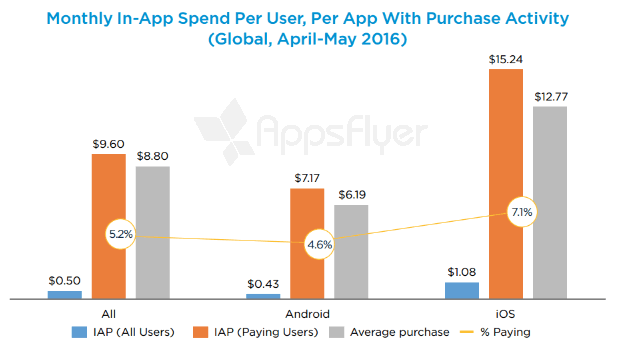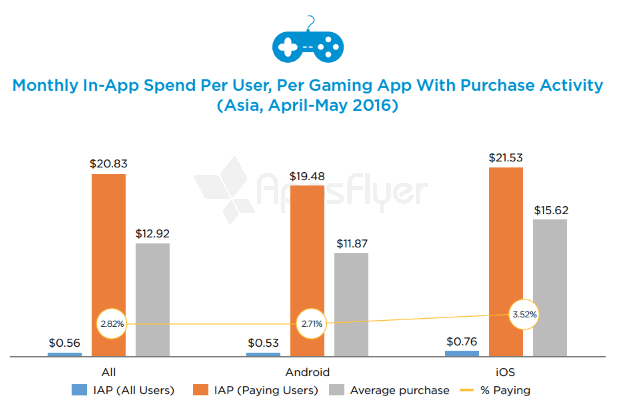Facebook is the undisputed king of mobile app advertising. For the price of $3.40 per install on average, $2.9 billion is spent of marketing apps on Facebook. Few can argue the platforms strong ability to target users. But the price is steep. Does it pay off?
It starts with your business model. Appsflyer claims that in-app-purchase (IAP) models are by far more lucrative than advertising financed apps. Regardless of the category of your app, you can expect that a user utilizing IAP will spend $7.17 on Android each month:

That is good news, of course the report does not say anything about churn. However, if you consider that only 4.6% of users end up spending, it means in order to recover your $3.40 investment in the install, your paying users have to be paying for more than 10 months in order for your Facebook investment to be worth it. That is a tall task. Of course that is assuming the gross revenue goes to the developer, which it never does. If you consider a 30% app store share and potentially other billing costs in emerging markets, developers may end up with only 50%, meaning you need a paying user to keep paying for 20 months. It would not be a stretch to say that the average economics here do not add up.
There are good news however. Some regions have significantly higher spend, like Asian users:

That means for gamers in Asia, you can recover the average cost in about 4-6 months. However, in Asia there are far better paths to market for installs than Facebook. First, there are a huge variety of alternative app stores, like the T-Store, Mobango, 9Apps, 1Mobile and more. Second, CPI campaigns for these countries can be significantly cheaper than going through Facebook. We have a strong CPI offering for the region just here at CodeNgo.
Of course, as Appsflyer points out, the solution of focusing on Asia (or other regions like Latin America) is not that simple. The market is vast, business models (including price points, user behaviour on paid vs free, etc) varies widely, and you may have to spend on localization as well – at a minimum on your marketing. Clearly, no better time to build a small global business though!
Share this article on